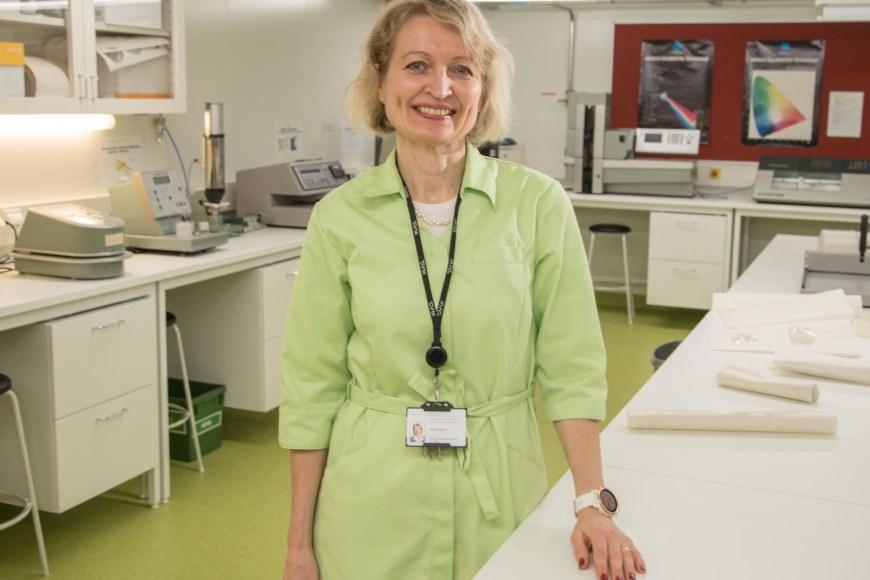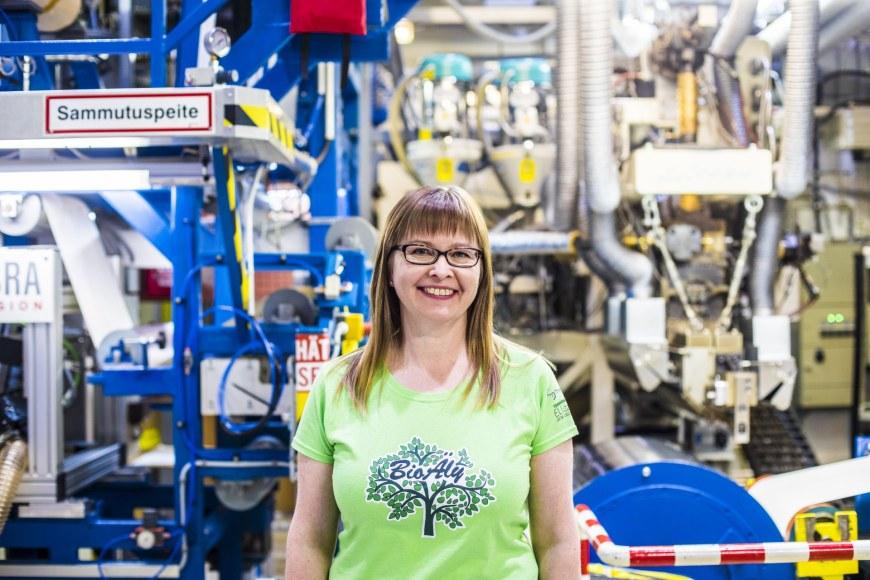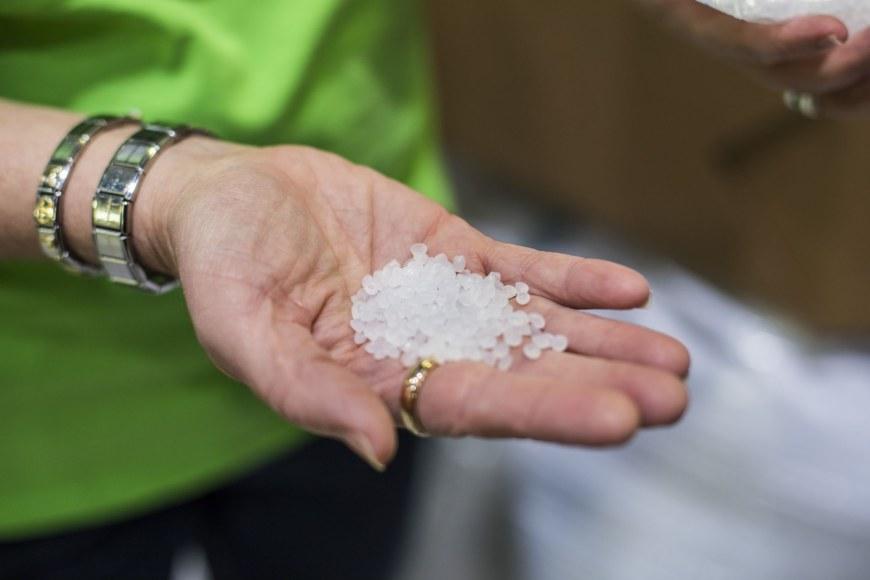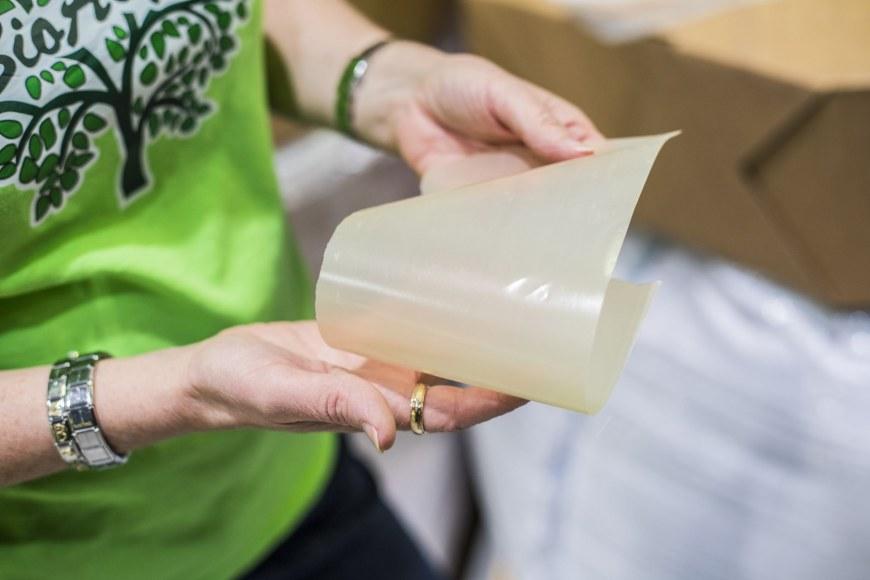Bread bags made from oat hulls – new alternatives emerge for plastic packaging

This article was originally published in Unit, the magazine of Tampere Universities.
Päivi Viitaharju, lecturer who specialises in bioproduct engineering at Tampere University of Applied Sciences (TAMK), is eagerly waiting to receive the first prototypes of a paper bag made from a novel raw material. If everything goes as planned, stores may soon be selling bread in bags made from oat-based paper.
Nothing should go to waste
Besides climate change, the depletion of natural resources is a major concern worldwide. We continue to consume more resources than our planet can regenerate.
This means that we should be using our existing resources more efficiently, but even so, for example, most of the hulls removed from grains are currently burned in power plants.
The HerääPahvi! project was launched to develop packaging materials from oat and barley, among other things. The project led by Päivi Viitaharju improves material efficiency as it explores the possibility of manufacturing paper from a mix of oat hulls and wood fibres.
New packaging materials are being developed from the by-products of food industry.
”Natural resources should not be wasted. We are hoping that the new packaging materials could partly replace plastic bags. It is crucial we tap into hitherto unused sources of raw materials,” Viitaharju says.

New solutions alongside plastic
Researchers on the Hervanta campus of Tampere University are also studying the potential uses of food industry by-products. For example, bioplastic is a by-product of sugar production.
New packaging materials are being developed from wood-based raw materials such as nanocellulose and lignin. Intelligent packaging solutions are another area of interest.
”It is important to consider the eventual selection of appropriate recycling options already when designing packages and selecting packaging materials,” says Johanna Lahti. She coordinates the Bio-based Intelligent Solutions for Circular Economy (BioÄly) project carried out at Tampere University.
The BioÄly project is a collaborative effort involving three faculties and five laboratories and research groups of the University. The project develops smart solutions to support the transition to a sustainable bioeconomy and circular economy.
The right material for the right purpose
According to Johanna Lahti, biomaterials will not fully replace petroleum-based products in the near future, because plastic boasts properties that are difficult to emulate using alternative materials. Still, new alternatives to conventional plastics, such as bioplastics, are springing up all the time. In fact, plastic can be biodegradable and even compostable.
”The key is to select the right material for the right purpose and plan the entire product lifecycle, including recycling,” Lahti points out.
Lahti believes that new materials should deliver the same performance as their conventional counterparts. The main purpose of packaging is to preserve and protect the contents and make sure nothing leaks or seeps out.
”Especially food packages are challenging because they must provide a barrier to the transmission of fats, water vapour and oxygen, among other things. The need to improve material efficiency means, for example, that the layers of materials must be made thinner. This places even greater demands on the materials.”

Paper made from oat hulls
The participants of the promising HerääPahvi! project went through a series of exciting moments before they were able to deliver a sample of their new material to Peltolan Pussi, a local paper bag manufacturer. In spring 2019, the team headed to Tervakoski paper mill to make paper. Ground oat hulls make up 15-50% of the end product. The rest is conventional wood pulp.
Viitaharju is already satisfied with the quality of paper.
”The product looks very good but there are risks involved, as with any novel material. We have carefully measured the strength of our paper: the bags need to be durable so they do not tear under the weight of the contents.”
The paper bags are designed to hold cookies or a small baguette.
”The paper machine we are using produces quite narrow rolls of paper, which at least for now limits the size of the bags.”
Bakeries will be contacted once the bags are ready to go into production. The grain industry is looking for reuse options for the by-products of milling processes. As bakeries have already shown a keen interest in the paper bags, the project participants are confident that there will be a demand for their unique paper bags.
“Flour milling plants are also looking to bring added value to grain crops.”


A bread bag that communicates
Multiple dimensions of product and service development ranging from design, communication and media coverage to branding and storytelling are incorporated into the HerääPahvi! project to support the commercialisation of the new products.
“As we do not yet have market-ready products available, we have focused on formulating our core message that defines what our project is about and what we need to communicate to our external audiences,” says Tomi Leino, senior lecturer in media and art at TAMK.
Leino supervises groups of media students tasked with creating animated short films and commercials for the YouTube channel of the HerääPahvi! project. Approximately 30-40 students have already participated in the project.
“Brand-building, commercialisation and marketing efforts will begin as soon as the first product, namely the bread bag, is ready for the market. We will also continue communicating with our target audiences and documenting the process.”
“The project is intriguing from a teaching perspective, too. Nowadays recycling and solid eco-credentials are expected as a matter of course, and they are important topics for students,” Leino says.
The story will evolve along the way
The unique paper bag design represents and communicates certain values to consumers. According to Leino, a package can be thought of as a medium or a tool, kind of like a distribution channel.
“We may often assume a package to be only that and fail to appreciate the different dimensions of packaging design, such as visual storytelling. Perhaps consumers are wondering that prompted them to choose a certain package over others. Words and images can be used in packages to elicit questions about values.”
Storytelling can also include the discovery of a metastory while working on the different aspects of product development.
“Here the term metastory also refers to the overall picture, the gist of the story that everything revolves around.”
Leino is hoping that after the new products are finished, the project participants will be able to develop a shared perception of a possible story behind them.
“The metastory can also evolve organically when consumers and other stakeholders get a hold of the new products. This fact should be taken into account in the commercialisation process by striving to continuously connect with different target groups. This is an effective brand-building strategy and engages potential customers,” Leino says.
The project participants are keeping their finger on the pulse of what prospective customers and collaboration partners want.
The final choice is made by the consumer
Consumers will ultimately decide how they want their products packaged and whether they choose packages made from plastic or a fibre-based, sustainable and recyclable material.
“Being close to the source of raw materials is also important. Transport costs can be kept down as there are grain processing plants located near paper mills,” Viitaharju says.
How much will consumers be willing to pay for sustainable packaging?
”The oat hull paper bags do not cost more than conventional bags because the raw material is cheaper. But as our bags are made from a coarser material, further research is needed to fine-tune the production process,” Viitaharju says.
Once the project participants have demonstrated the feasibility of the invention, Viitaharju hopes that industry partners will come on board so that the process can be scaled up for commercial production.
In addition to a sustainable paper bag, there are other ideas in the pipeline waiting to be explored before the project ends in October 2020.
”Champagne cartons made from grape skins are already available on the market. A packaging-grade paper containing grass recently won an award as the best sustainable packaging innovation. There are a few examples of sustainable packaging from around the world but we have not come across other grain-based packages. The EU recently banned single-use plastic items such as straws, which increases demand for plastic alternatives.”
Viitaharju has high expectations for the future.
“We have received overwhelmingly positive feedback. Our product attracted a great deal of interest last time we visited Peltolan Pussi.”
Projects facilitate the transition to a circular economy
- HerääPahvi! is a collaborative project between Tampere University of Applied Sciences, the Natural Resources Institute Finland (LUKE) and Design Forum Finland. It combines creative expertise with the latest knowledge and innovations in bioeconomy and circular economy.
- HerääPahvi! is a continuation of the Carbon Sink Design Studio project.
- The project is coordinated by TAMK and will end in 2020.
- The Bio-based Intelligent Solutions for Circular Economy (BioÄly) project seeks to create intelligent and commercially viable product and service concepts that are based on renewable biological resources. The concepts will be tested in collaboration with companies.
- The BioÄly collaboration platform brings together researchers and other stakeholders. The project has a strong multidisciplinary focus and it holds promise to address current challenges relating to the transition to a sustainable bioeconomy and circular economy.
- BioÄly aims to lay the groundwork for the development of an expanding and attractive long-term ecosystem.
- The project will end in 2021.
Author: Arja Hautala








